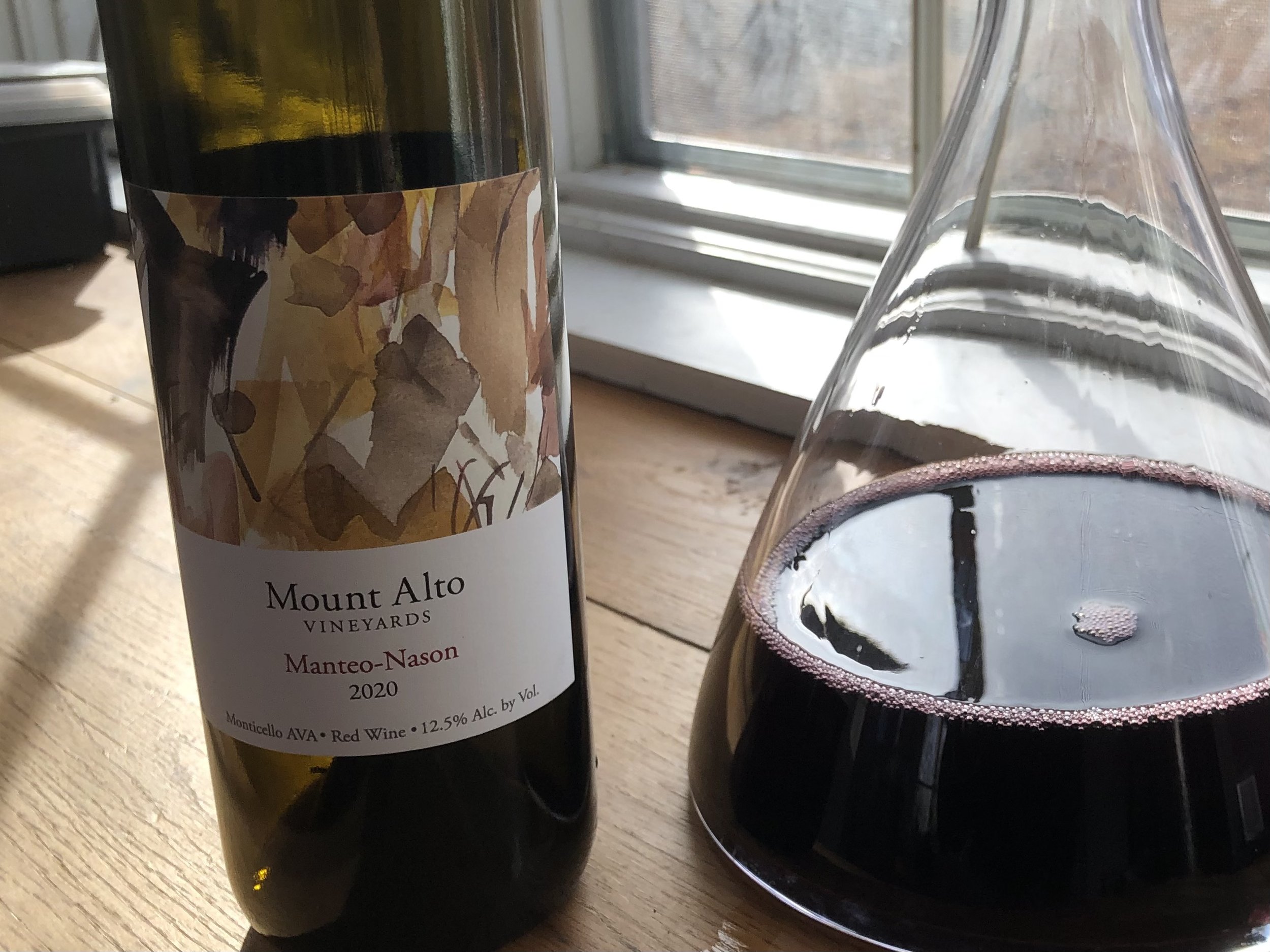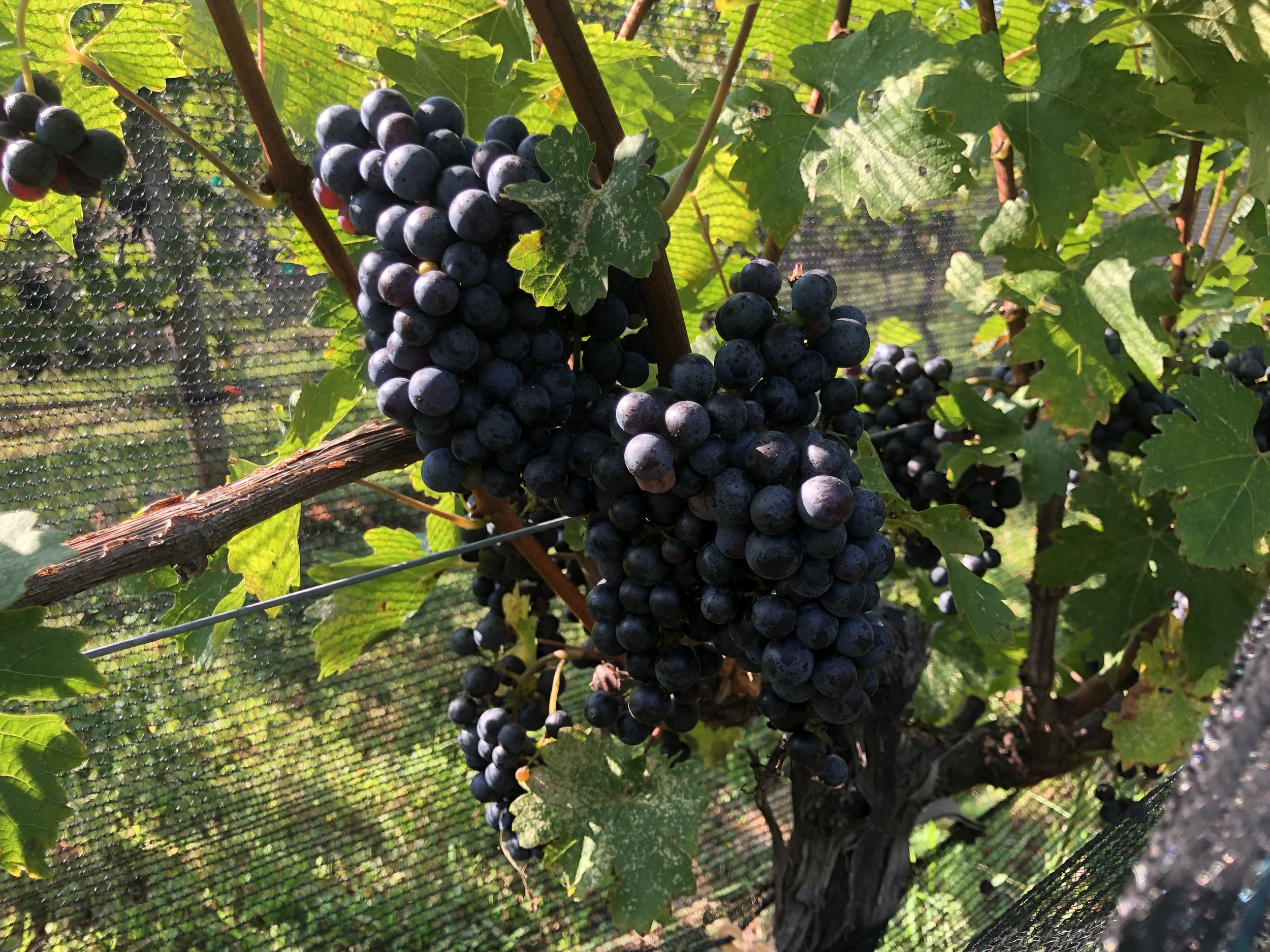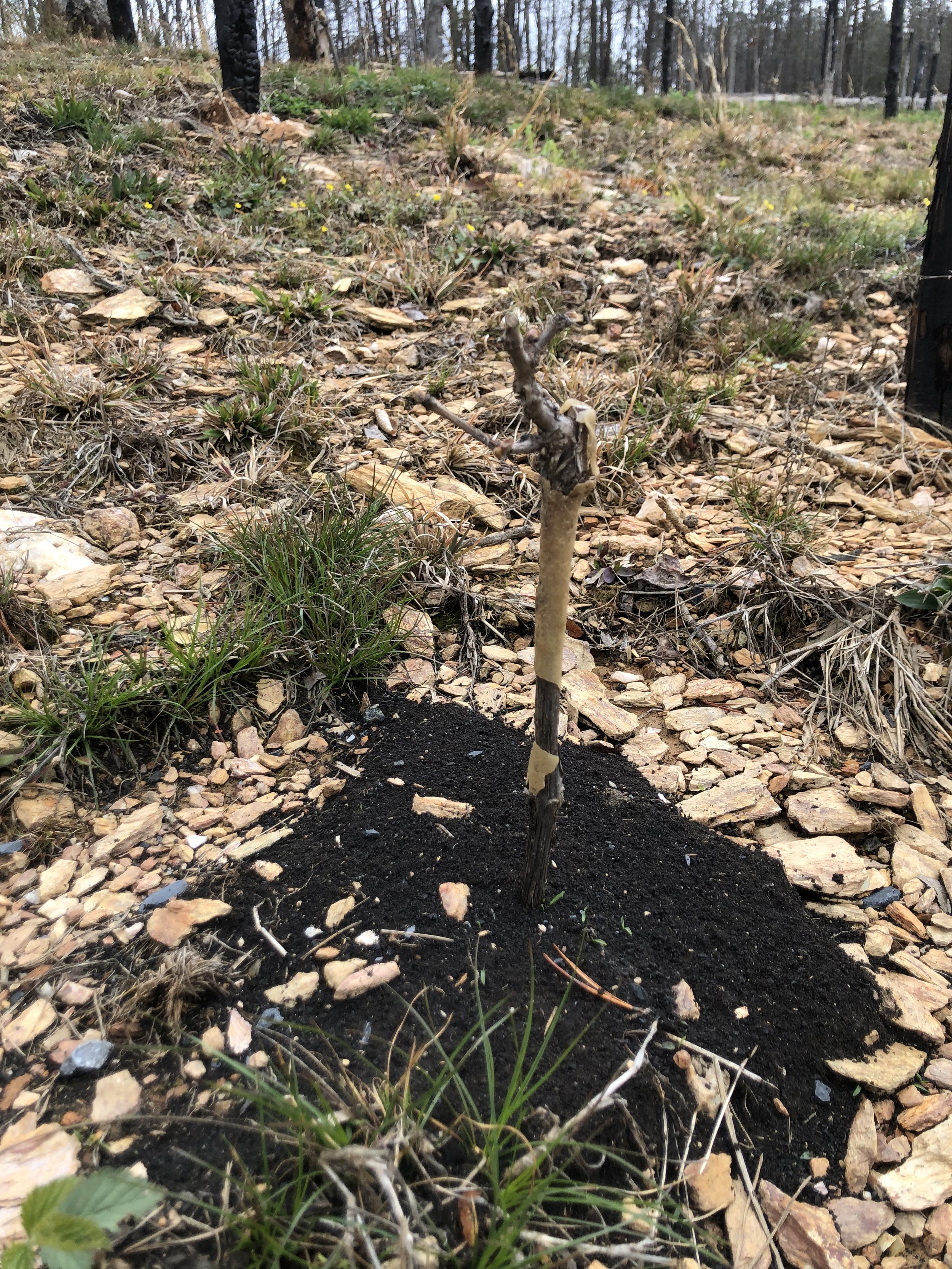Despite a sprinkling of 60 degree December days, I think we can say the winter weather has finally arrived in central Virginia (though how long it will stay is anyone's guess). Temperatures have already dipped below 10F, and two snows have fallen. The 2024 harvest and primary fermentation concluded in October, and we spent November and December plastering the exterior of the winery and just sort of puttering about, recovering from a fast and fabulous season. After the meandering fall, we've fully embraced the notion that the 2025 vintage is well under way, and some of the most important human work takes place while the vines are sleeping. Pruning began on January 4th, and we'll spend the next 8 weeks slowly making our way through the vines. At the same time, we'll be bottling our 2022 vintage, putting some finishing touches on the winery, and making our first ever appearance at the Wool Factory's Wine Festival on Saturday January 18th (more info here). Read on for some more details about the recent vintage and the current activity on Mount Alto.
The 2024 Growing Season
The weather was very dry in April, May and June, but as we reached the zenith of the drought in mid-July, we saw minimal stress in the vines. The lack of drought stress was a surprise, as the meager spring rain was like no other we have seen before. As to what could have allowed our vines to thrive, a couple things come to mind: 1) we think that the soil was well saturated after a wet winter, and 2) we feel that the no-till/no-herbicide cover-cropping that we’ve always practiced has led the vines to drive their roots deep into the soil, insulating them from surface conditions and increasing organic matter, which moderates moisture swings. Or, who knows, clean livin’? Good luck? Take your pick.
Beginning around mid-July we had a normal or even slightly wetter than normal conditions with 3 hurricanes before final harvest. The first one, hitting in mid-August, was of little consequence, despite serving up over 7” of rain, as the clusters had completed changed color (véraison), and were in that sweet spot where they were no longer vulnerable to early season rots, with skins still too thick to be troubled by excess moisture. During late August we begin sampling berries to assess ripeness, and even though harvest was 3-4 weeks in the distance, it became clear that the dry conditions from fruit set to just before véraison formed an unusually high amount of tannins in the skins, and so this would be another vintage with wines marked by considerable “structure”.
As they often do at this time of year, things got dicey. September featured not one but two hurricanes, leading us to formulate a very fine grained picking strategy, planning our harvest row by row. We spent the last 2 weeks of the season chewing berries to try to determine which sections of the vineyard might withstand another deluge, and which would fall apart if we didn’t bring them into the winery. In sum, we picked merlot from a neighboring vineyard in early September as the skies filled with sporadic storms, and then the youngest cabernet was picked the day before the first of the two hurricanes. It was super-stressful watching a half a foot of rain fall on the older cabernet that remained on the vine. In years past, we’ve guessed wrong in terms of the cluster’s ability to withstand rain, and had to rush out into the vineyard and harvest immediately post-storm, slowly picking through damaged clusters. This time, we got it right, and our older vines held beautifully. We enjoyed a dry and sunny 5-day interval after hurricane Francine left us, and we picked the older cabernet on September 21st just before hurricane Helene arrived.
Wine Making 2024
Since we were forced to pick some blocks a few days earlier than we would have liked, we were nervous that the wines might be a bit too tannin dominant. While the extra time in the sun afforded by our picking strategies allowed some softening of the tannins, we still took care in the winery to handle the skins delicately. Punch-downs were more like a gentle dunking (a baptismal if you will!), to wet the cap and mix a little air into the must.
After pressing, the wines were powerfully tannic as expected, though our small lot picking strategies succeeded in allowing some ripeness and richness into the wine. We are hopeful that as they wait in barrel over the next 12-18 months, beautifully balanced wines will emerge. Already, they are an aromatic treat, with a burst of berries filling the air in the winery whenever we top off the barrels. Frankly, it’s a challenge to resist sampling the wines too frequently. In all, we’ve got a little more than a barrel of merlot and two and a half barrels of cabernet sauvignon (the cab was co-fermented with 6-7% petit verdot). Once malolactic fermentation concludes we’ll start to think about blending trials. They’ll be ready to drink sometime in 2026 or 2027.














